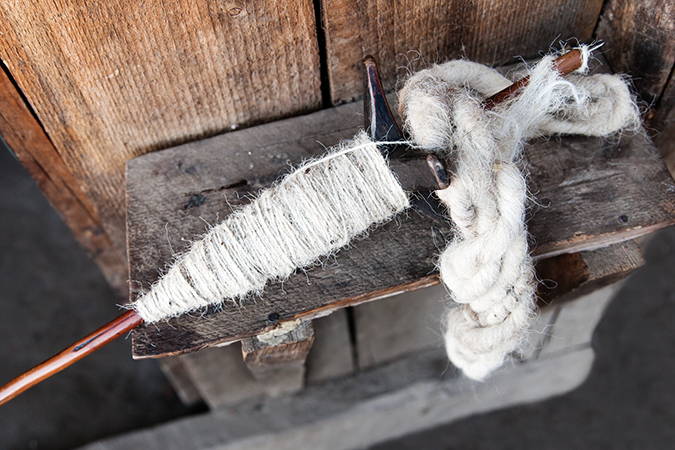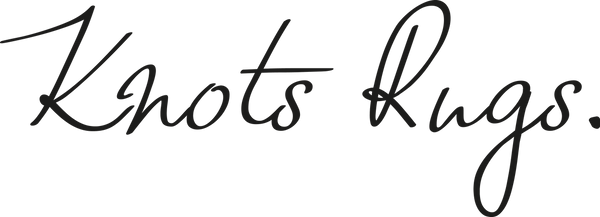PRODUCTION
Knots Rugs is committed to the improvement of sustainability. We are always looking at ways we can improve our environmental performance and reduce any negative impact on the environment. We design, source, and produce high quality products that will stand the test of time. We are immensely proud to supply premium products to our clients, a traditional hand knotted wool rug stands tall against the environmental impact of built-in obsolescence found in many mass market mechanically produced products. A hand knotted rug is incredibly durable, will age gracefully and can be used for many years thus reducing post-consumer waste.
We use natural fibres, avoiding the use of synthetic materials, industrial machines, acids and chemicals in the process. Wool forms the major component of our rugs and not only does it have the pedigree of performance but is a naturally renewable and sustainable product. This hard-wearing fibre is also bio-degradable at the end of its lifespan.
All of our rugs are handmade in either Nepal or Jaipur, India. All of the collection pieces are made from an artisanal process, where each step is meticulously executed by hand, rich in culture and tradition. The primary substrate for the core collections is Nepalese Tibetan knotting, with designs ranging between 100 to 300 knots per square inch. Alongside this, Knots use Persian knotting and Turkish knotting for their 17th Century collection – within this collection, the 11/11 Persian knot is the most popular quality, with finer designs being produced in a 13/13 Persian knot. Our rugs are made the same way they have been for centuries. This process is environmentally friendly by nature, and their production consumes very little energy.
We are always expanding our ranges and collections through the introduction of new materials and techniques. Exploring the possibilities of different fibres such as Yak wool, Cactus and Nettle, and we have recently created a fully customisable collection of flatweave, shaggy and super soft plain rugs. Alongside this, we have recently started to expand and diversify the qualities that they have to offer by using handloom, handwoven flatweaves and hand-tufting.
The Wool
The wool used in our rugs comes from Tibetan Highland Sheep, which is one of the best quality wools on the market. Highland Tibetan wool is high in fat, otherwise known as lanolin. The high Lanolin content in their coats is used for protection against the elements and once transformed into a hand woven rug the Lanolin also protects against staining in the finished article.
Other Fibres
Other materials we use are Chinese silk and nettle. Nettle grows in abundance in Nepal and once processed becomes a lovey fibre with unique qualities. It has a subtle shine and also creates a mottled effect when used in its un-dyed form.
Hand-Carding
Hand carding is a vital step in the production process because it transforms the raw wool into yarn that is ready to be spun. The process of hand carding involves de-tangling the raw wool by teasing it back and forth between two paddles. These paddles have small metal spikes on one side, which act as a brush, working through the tangles to filter out any thorns or grasses, which may have become attached from before the sheep were sheared.

Hand-Spinning
The hand carded wool is fed into a spinning wheel where it is spun and twisted into one long strand of yarn. We can change the length and thickness of the yarn according to our designs by changing the amount of wool added. After the yarn is spun it is wound around a spool and balled.
Dyes
Traditionally, the dyes used to create Tibetan rugs are acquired naturally through herbal plants, however nowadays with the advancements of technology and logistics; many dyes made from other substances are available. At Knots we use the ARS colour system and also some natural dyes.
Dyeing Process
Pot dyeing is a long established and traditional method of dyeing used to dye the yarn to make our rugs. The yarn is placed into a large pot filled with boiling water with the specific amount of dye added for the specific colour. The yarn is constantly turned on a wheel to ensure that the colour has effectively permeated the wool and is also consistent however a natural abrash will occur due to this process. Once the dyeing process is complete, the yarn is then left to dry naturally on top of the roofs. There are also modern forms of dying in Nepal that are less labour intensive.
Graphs
When an idea for a rug is developed, the artwork is then sent to Nepal as a digital image, drawing or photograph. The designers will create a CAD for approval, once approved the graphs are made to scale.
Making The Graph
The final graph is the template used by the weavers. This gives a detailed account knot by knot of the correct colour and design for them to follow. Graphs can be hand painted or computer generated all depending on what the design needs.
Looms
All our rugs are hand knotted on looms. A loom is normally constructed of a metal frame that is strung with thin cotton threads to create a tension for the warp threads to be woven through it. The loom threads are the structure of the carpet.
Hand-Knotting
There are three commonly used forms of knotting, in hand woven carpets Tibetan, Persian and Turkish knotting. We use Tibetan knotting in most of our collections except for our Jaipur collection, which is a Persian Weave. Tibetan knotting is made using a rod. The rod used determines the pile height of the finished carpet. The rod is placed through the width of the carpet and the weft is woven through it around two warp threads at a time. Once a line has been woven the part is bashed down and then cut, then the process is started again using the graph as a guide.
Washing And Stretching
It is essential to wash a rug after it is woven for various reasons. One is to ensure that the dyes have truly bound to the yarn and is colour fast. Another is to wash out any dust or dirt that may have become knotted in with the yarn when making the rug. Once washed, the rug is stretched out, by being stitched onto a metal frame, as the washing process causes shrinkage and this usually takes 3 to 5 days.
Finishing
Once dried, the rug is then hand clipped with special scissors with 16-18 inch blades to contour between colours which gives each rug character and a three dimensional effect. Once all the loose ends are tied- or clipped- the rug is shipped to our showroom where they are put on display for the world to enjoy.






